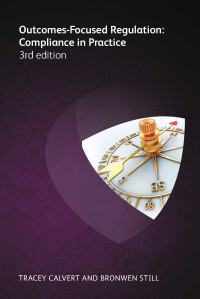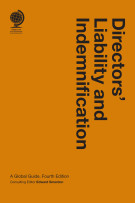
Author(s): Tracey Calvert, Bronwen Still
Publication date: Aug 2016
Format: Softback
Pages: 196
Price: £195.00
ISBN: 9781783582464
How our eBook platform works
How permanent access, multi-user eBooks work
Fully revised and updated, the third edition of Outcomes-Focused Regulation: Compliance in Practice brings practitioners up to date with recent and upcoming changes to the SRA Handbook and evolving regulation. Covering all the main requirements of the Handbook, the drivers behind them, and essential steps to remain compliant, it also provides practical tools to help firms formulate a compliance plan. Also included are real-life case studies from leading practitioners, giving critical insight into practical issues faced by compliance officers, and best-practice advice on good governance and compliance planning.
Key features of this updated book include:
- Information on the effects of the LSA and the changes it has brought;
- An overview of the 16th version of the SRA Handbook;
- The SRA Principles;
- The SRA’s approach to authorisation and its views on risk, including information from the Regulatory Risk Framework;
- The SRA Code of Conduct and an explanation of its compliance requirements and risk management strategies in key areas such as client care, conflicts of interests, and confidentiality, referrals, outsourcing, separate businesses, and overseas practice;
- An indicator of changes on the horizon and how the SRA is likely to respond;
- The SRA’s approach to supervision, including a reference to the indicators in the various supervision and enforcement strategies published by the SRA;
- Advice on compliance planning; and
- Case studies and practitioners’ perspectives.
This book is designed to assist firms to develop and strengthen their governance arrangements and risk management strategies as they become more familiar with outcomes-focused regulation. It also flags up new business opportunities available to firms through external investment and the use of separate businesses.







